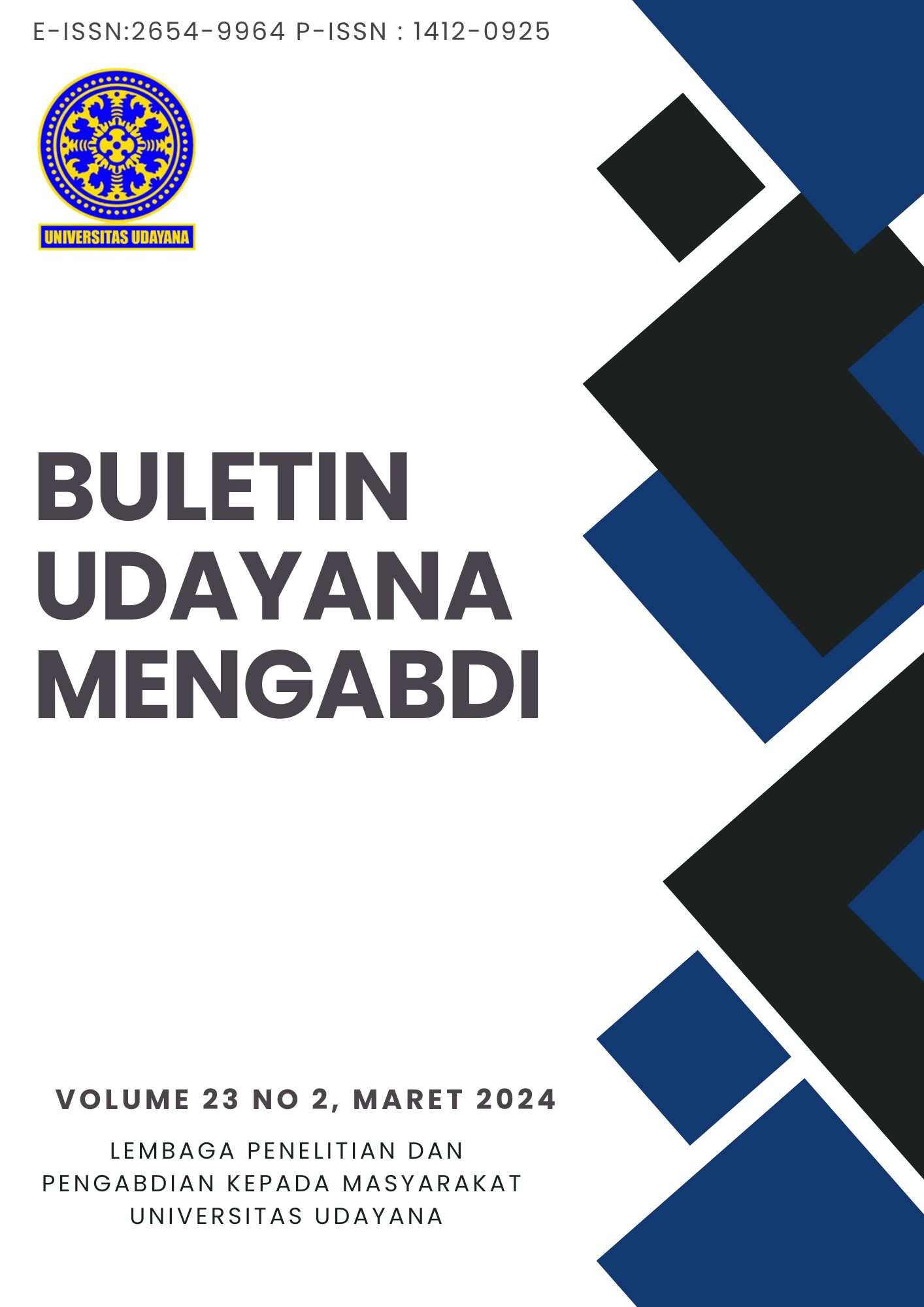PERMAINAN CARI KOTAK POIN (CARKOIN) SEBAGAI SARANA EDUKASI ANAK DALAM UPAYA PREVENTIF PENYAKIT DIARE DAN KECACINGAN
Abstract
Children are the nation's next generation, therefore children need special attention in terms of education and health, so that they can become superior qualities for the progress of the nation. However, it should be noted that children have relatively weak immune systems, so they are susceptible to diseases such as diarrhea and intestinal worms. Factors causing diarrhea and intestinal worms are the lack of personal sanitation (clean and healthy living behavior) in children. The behavior in question is children defecating openly, playing with bare feet, not washing their hands before eating and after defecating, not keeping their fingernails and toenails clean, and eating snacks that are not kept clean. This educational game Find Points Box (CARKOIN) is made to increase children's knowledge and change children's behavior to be healthier. The implementation method in this activity is carried out through several stages. The results of the study showed that at each stage of implementation the children were enthusiastic about listening to the counseling material and were also enthusiastic about finding the point boxes and answering the questions in the boxes.
Keywords: Diarrhea, Worms, Child, Education, Game.
Downloads
References
Fatmawati, Arbianingsih & Musdalifah. (2019). Faktor Yang Mempengaruhi Kejadian Diare Anak Usia 3-6 Tahun di TK Raudhatul Athfal Alauddin Makassar. Journal Of Islamic Nursing. Vol. 1 : No. 1.
Indriyani, Desak Putu Rendang & Putra, I Gusti Ngurah Sanjaya. (2020). Penanganan Terkini Diare pada Anak: Tinjauan Pustaka. Intisari Sains Medis. Vol. 11 : No.2, pp. 928-932.
Jayadi, I.P.O.K., Komara, I.M.A.N., Nugraha, M.A.A., Ariwangsa, I.D.G.A.S., Triyasa, P., Kapti, I.N. (2020). Faktor Risiko Diare Pada Anak Usia 1-12 Tahun di Wilayah Kerja Puskesmas II Denpasar Barat, Bali, Indonesia. Intisari Sains Medis. Vol. 11 : No.2, pp. 711-716.
Kementerian Kesehatan RI. (2019). Rencana Strategis Kementerian Kesehatan RI Tahun 2015-2019. Kementerian Kesehatan RI. Jakarta.
Menteri Kesehatan Republik Indonesia. (2017). Peraturan Menteri Kesehatan Republik Indonesia Nomor 15 Tahun 2017 Tentang Penanggulangan Cacingan. Menteri Kesehatan Republik Indonesia. Jakarta.
Prawati D. D.,& Haqi D. N. (2019). Faktor Yang Mempengaruhi Kejadian Diare Di Tambak Sari, Kota Surabaya. Jurnal Promkes. Vol. 7 : No.1.
Ramdhan, H., Bahar, H., & Erawan, P.E.M. (2017). Pengaruh Penyuluhan Kesehatan Menggunakan Metode Permainan Edukatif Ular Naga Pencegah Diare (UNAPED) Terhadap Peningkatan Pengetahuan, Sikap dan Tindakan Untuk Pencegahan Kejadian Diare Pada Murid Kelas IV dan V SDN 19 Mandonga di Kecamatan Puuwatu Kota Kendari Tahun 2017. JIMKESMAS (Jurnal Ilmiah Mahasiswa Kesehatan Masyarakat). Vol. 2 : No.5.
Sigalingging G., Sitopu S.D., & Daeli, D.W. (2019). Pengetahuan Tentang Cacingan Dan Upaya Pencegahan Kecacingan. Jurnal Darma Agung Husada. Vol. 6 : No.2, pp. 96-104.
Selviana, Trisnawati E.,& Munawarah S. (2017). Faktor-Faktor Yang Berhubungan Dengan Kejadian Diare Pada Anak Usia 4-6 Tahun. JVK (Jurnal Vokasi Kesehatan). Vol. 3 : No.1.
World Health Organization. (2016). Soil Transmitted Helminth Infection. World Health Organization. USA.

This work is licensed under a Creative Commons Attribution-ShareAlike 4.0 International License.

This work is licensed under a Creative Commons Attribution-ShareAlike 4.0 International License.




.png)


1.png) GARUDA - GARBA RUJUKAN DIGITAL
GARUDA - GARBA RUJUKAN DIGITAL



